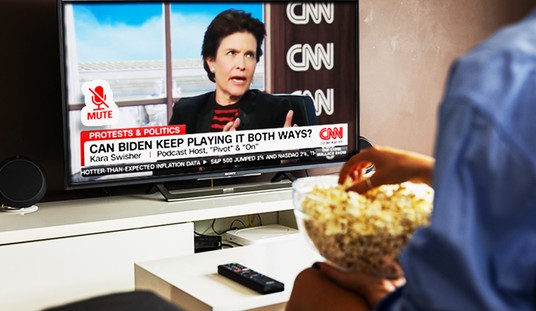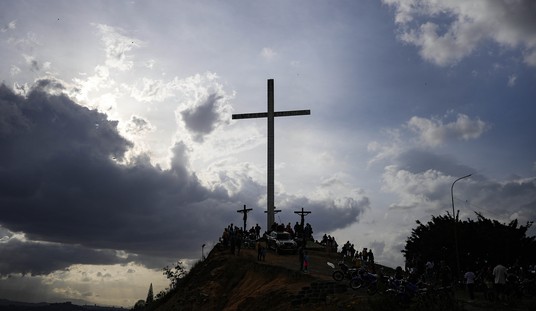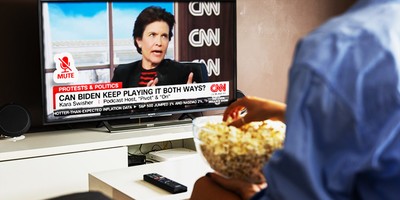Yes, says the New York Times, in a hopeful piece published earlier in the week -- which is nevertheless filled with caveats and warnings. Washington State has been disproportionately battered by Coronavirus, becoming one of America's earliest hotspots. But aggressive social distancing policies appear to be bending the trajectory in a less destructive direction. One can only hope and pray that this proves to be data that helps confirm that all the nationwide sacrifices and disruptions are worth it:
The Seattle area, home of the first known coronavirus case in the United States and the place where the virus claimed 37 of its first 50 victims, is now seeing evidence that strict containment strategies, imposed in the earliest days of the outbreak, are beginning to pay off — at least for now. Deaths are not rising as fast as they are in other states. Dramatic declines in street traffic show that people are staying home. Hospitals have so far not been overwhelmed. And preliminary statistical models provided to public officials in Washington State suggest that the spread of the virus has slowed in the Seattle area in recent days. While each infected person was spreading the virus to an average of 2.7 other people earlier in March, that number appears to have dropped, with one projection suggesting that it was now down to 1.4...The progress is precarious, and the data, which was still being analyzed and has yet to be published, is uncertain. Officials said that expansive social distancing policies will remain a key part of daily life for weeks to come.
Clearly concerned about citizens growing complacent after learning about positive developments, Gov. Jay Inslee is quoted as saying the state is not "within 1,000 miles" of declaring victory: "The governor said that the state was far from turning a corner. While there are indications of improvement, he said, he has also seen numbers in the last few days that still have him worried, including a rise in positive test results statewide and the emergence of new cases in rural areas." Read Allahpundit's post for several reasons why the Seattle example (if it holds up) may not be easily transferrable to the rest of the country, although as he also notes, it's becoming clearer that early and very aggressive action can really put a serious dent in the virus' spread. Remember that New York state community that was locked down as a hotspot, very early in this awful saga? Major restrictions have paid dividends:
Recommended
Two weeks ago, an unexpected cluster of coronavirus cases in New Rochelle, N.Y., seemed an unnerving sign that an outbreak that had devastated China and Italy was taking hold in the New York region and could spread rapidly. The state took drastic measures that stirred a backlash, including creating a containment zone. But now, the latest data indicates that the measures may be starting to work. The outbreak, which Gov. Andrew M. Cuomo once said was advancing “unabated” in New Rochelle, has appeared to slow: Over the last four days, only 38 new cases were reported to the county. “Everybody talks about flattening the curve, and I think that’s exactly what we were able to do in New Rochelle,” said Dr. Sherlita Amler, the Westchester County health commissioner...“In the beginning, it felt like house arrest,” said Samuel Heilman, a New Rochelle resident whose family was among those ordered to self-quarantine on March 3. The families had all attended the same synagogue, Young Israel of New Rochelle, as a lawyer who was the first person diagnosed with the coronavirus in the community. “In effect, it felt like we were being punished,” Mr. Heilman said. “But the punishment turned out to be a blessing in disguise. This is really a case of perspective.”
I'll also note this, with due caution:
More data suggesting that New York could be approaching a peak in new cases. Over the next 7-10 days they could peak and start slowly turning the corner. Mitigation is working in New York. https://t.co/9rJiqCK4En
— Scott Gottlieb, MD (@ScottGottliebMD) March 30, 2020
Progress is uneven, but the sooner cities and regions move past their peaks, the sooner two weeks of declining cases can be achieved, and the sooner Gottlieb's 'phase two' get-back-to-work plan (which the president has confirmed he's seen and is considering) can start to be implemented. And since we're rolling with upbeat vibes in this post -- we've had plenty of sobering reality checks lately -- here are a few more pieces of anecdotal evidence (with all the requisite asterisks attached) that certain anti-viral drugs can be effective in treating at least some patients with Coronavirus:
"I was struggling to breathe. I felt like I was slowly drowning and I was sitting there thinking I'm not going to make it until midnight."
— Andrew Clark (@AndrewHClark) March 31, 2020
Santilli says the experimental drugs Hydroxychloroquine and Azithromycin brought him back from the brink. https://t.co/fsBehgQ6WH
Results from the first randomized clinical trial of HCQ. Small study from China.
— Phil Kerpen (@kerpen) March 31, 2020
"Among patients with COVID-19, the use of HCQ could significantly shorten time to clinical recovery and promote the absorption of pneumonia." https://t.co/OKKCx19ToU
For all sorts of reasons, I don't believe anything coming out of China, but this is still something to keep an eye on. I'll leave you with (1) Sen. Marco Rubio's succinct reminder of what the purpose of the current hardships are, (2) a New York doctor's arresting letter to colleagues, and (3) a worrisome indication that many areas of the country may be nowhere close to peak virus:
The key goal of distancing is buying time. For more tests. For more ventilators. To open up more beds in hospitals. To allow researchers to make progress on anti-virals.
— Marco Rubio (@marcorubio) March 31, 2020
I know its a big hassle & comes at a high economic price.
But the alternative outcome is far worse.
From the Chief of Surgery at Columbia: pic.twitter.com/clQ6eNRYYc
— Richard M. Nixon (@dick_nixon) March 27, 2020
The number of cases in states other than New York continues to rise sharply as other epicenters of U.S. spread emerge. All states should be developing statewide plans to support urban centers, preserve hospital resources in the community settings, and protect nursing homes now. pic.twitter.com/RMfFV7sAr3
— Scott Gottlieb, MD (@ScottGottliebMD) March 31, 2020
How about one more (4) to end on a happier note:
Encouraging news!
— Elizabeth Harrington (@LizRNC) March 31, 2020
Dr. Fauci says the daily rate of increase is not at a steep incline, but possibly starting to flatten out
?????? pic.twitter.com/oxgHR5Tdqx

























Join the conversation as a VIP Member